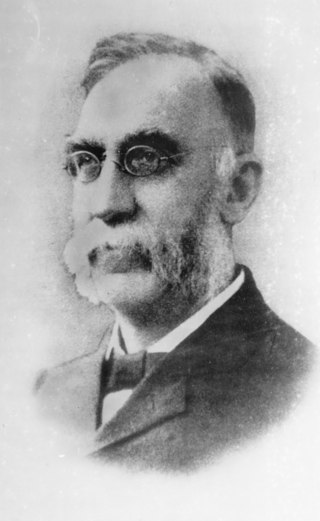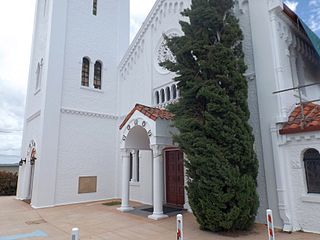Related Research Articles

War bonds are debt securities issued by a government to finance military operations and other expenditure in times of war without raising taxes to an unpopular level. They are also a means to control inflation by removing money from circulation in a stimulated wartime economy. War bonds are either retail bonds marketed directly to the public or wholesale bonds traded on a stock market. Exhortations to buy war bonds have often been accompanied by appeals to patriotism and conscience. Retail war bonds, like other retail bonds, tend to have a yield which is below that offered by the market and are often made available in a wide range of denominations to make them affordable for all citizens.

The 1916 VFL season was the 20th season of the Victorian Football League (VFL), the highest-level senior Australian rules football competition in Victoria. Played during the peak of World War I, the season was the shortest in the league's history and featured the fewest clubs, with only four clubs – Carlton, Collingwood, Fitzroy and Richmond – featuring in 1916. The season ran from 6 May to 2 September, comprising a twelve-match home-and-away season followed by a four-week finals series featuring all four clubs.

John Moffat was a Scottish-born entrepreneur who developed a mining and industrial empire around Loudoun Mill and Irvinebank in North Queensland which drove the development of north-eastern Australia. He was a devout Swedenborgian who was famous for both vision and enterprise. He was born in Newmilns, Ayrshire and spent most of his youth immersed in books. Extremely shy in temperament, he was known to hide whenever visitors approached. It was a habit he was to retain throughout his life.

Anzac Avenue is a heritage-listed major arterial road lined with trees in the City of Moreton Bay, Queensland, Australia. It runs 17.8 kilometres (11.1 mi) from Petrie to Redcliffe, with most of the route signed as state route 71. The route was formerly the main route to the Redcliffe peninsula, until the Hornibrook Bridge was opened in 1935.

The 31st Battalion, Royal Queensland Regiment was a Reserve infantry battalion of the Australian Army. Although it was officially formed as 31 RQR in 1965 the battalion can trace its lineage back to units formed in 1881 as part of the colonial defence forces of the state of Queensland.

Professor Errol Solomon Meyers was a prominent Brisbane doctor and one of the founding fathers of the University of Queensland School of Medicine in Brisbane, Queensland, Australia. He was a leader in medical and dental education in Queensland. Meyers also served with distinction during World War I.

Holy Trinity Anglican Church is a heritage-listed Anglican church at 68 Hawthorne Street, Woolloongabba, Brisbane, Queensland, Australia. Since 1869, three church buildings have stood on this hill top site. The current church was completed in 1930. It was designed by the architect Eric Ford, featuring Romanesque and Spanish Mission Revival style architecture. Its preserved original architectural features make the church a traditional wedding venue of inner Brisbane. The church was added to the Queensland Heritage Register on 9 May 2008.

Strathearn is a heritage-listed cottage at 16 Quarry Road, Alderley, City of Brisbane, Queensland, Australia. It was built between 1920 and 1950. It is also known as Anzac Cottage (no.37). It was added to the Queensland Heritage Register on 5 February 2007.
The Queensland War Council (1915–1932) was established by the Queensland Government to co-ordinate Queensland's assistance to World War I soldiers and their dependents.

Woody Point Memorial Hall is a heritage-listed school of arts at Hornibrook Esplanade, Woody Point, City of Moreton Bay, Queensland, Australia. It was designed by Hubert George Octavius Thomas. It was added to the Queensland Heritage Register on 14 March 2014.

In 1914, war was declared between Great Britain and Germany. Queensland independently claimed war against Germany, the Austro-Hungarian Empire, Bulgaria and the Ottoman Empire, uncertain if the Australian Constitution enabled a declaration of war by the Commonwealth of Australia. In the first few weeks that followed the declaration of war, existing militia were deployed to the Australian Naval and Military Expeditionary Force which attacked and occupied German New Guinea. Heightened patriotism resulted in 2500 Queensland men volunteering for the Australian Imperial Force. German military reservists were arrested and detained.

During World War I, extensive military recruitment took place in Queensland. Although many enlisted voluntarily, there was considerable pressure for the unwilling to enlist, including two unsuccessful attempts to introduce conscription in 1916 and 1917. Overall, more than 57,700 Queenslanders fought in World War I and over 10,000 of them died.

The March of the Dungarees was a snowball march in November 1915 in South-East Queensland, Australia, to recruit men into the Australian military during World War I at a time when enthusiasm to enlist had waned after the loss of life in the Gallipoli campaign. The march began at Warwick with 28 men and followed the Southern railway line through Toowoomba, Laidley, and Ipswich to its destination in Brisbane, gathering 125 recruits along the way.

The Queensland Recruiting Committee was a volunteer organisation in Queensland, Australia, which urged Queensland men to enlist for military service during World War I. It operated from May 1915 to December 1916, when it was replaced by an Australian Government recruitment organisation, the Queensland State Recruiting Committee.
Brisbane Apollo Male Choir is the longest running male choir in Brisbane, Queensland, Australia. Formed in 1884, the choir still performs today.

Queensland Soldiers' Comforts Fund, a working subdivision of the Australian Comforts Fund, was established during World War I. The purpose of the Fund was to provide comforts to soldiers on active service. This was achieved via appeals for donations, public subscriptions, and organising fundraising activities. Numerous branches of the Queensland Soldiers' Comforts Fund were spread throughout Queensland, Australia during this period.
Formed in 1900, the Queensland Patriotic Fund was responsible for raising funds and fund administration to provide financial and other assistance to those who were serving or had served in the armed forces of Australia, as well as offering support to their families.
Agnes Brysson MorrisonCBE was a Scotswoman who is credited with inventing "flag days" when small flags or badges, usually of paper, are given in exchange for donations to charity collections.

Colinton War Memorial is a heritage-listed war memorial at the corner of the D'Aguilar Highway and Emu Creek Road, Colinton, Somerset Region, Queensland, Australia. It was built in 1917. It was added to the Queensland Heritage Register on 15 July 2016.

Pialba Memorial Cenotaph is a heritage-listed memorial at Freedom Park, Main Street, Pialba, Fraser Coast Region, Queensland, Australia. It was designed by Philip Oliver Ellard Hawkes and built from 1918 to 1921 by Frederick William Webb. It was added to the Queensland Heritage Register on 6 May 2016. It is also known as the Pialba War Memorial and the Hervey Bay War Memorial.
References
- 1 2 3 4 5 6 Sinnamon, Myles (13 July 2016). "TEN MILES OF PENNIES AND THE QUEENSLAND RAILWAYS PATRIOTIC FUND". Queensland's World War 1 Centenary blog. State Library of Queensland. Retrieved 20 July 2016.
- ↑ "Queensland Railways Patriotic Fund". Queensland Railway Express. March 1918.
Attribution
![]() This Wikipedia article incorporates text from Ten Miles of Pennies and the Queensland Railways Patriotic Fund (13 July 2016) published by the State Library of Queensland under CC BY licence , accessed on 20 July 2016.
This Wikipedia article incorporates text from Ten Miles of Pennies and the Queensland Railways Patriotic Fund (13 July 2016) published by the State Library of Queensland under CC BY licence , accessed on 20 July 2016.